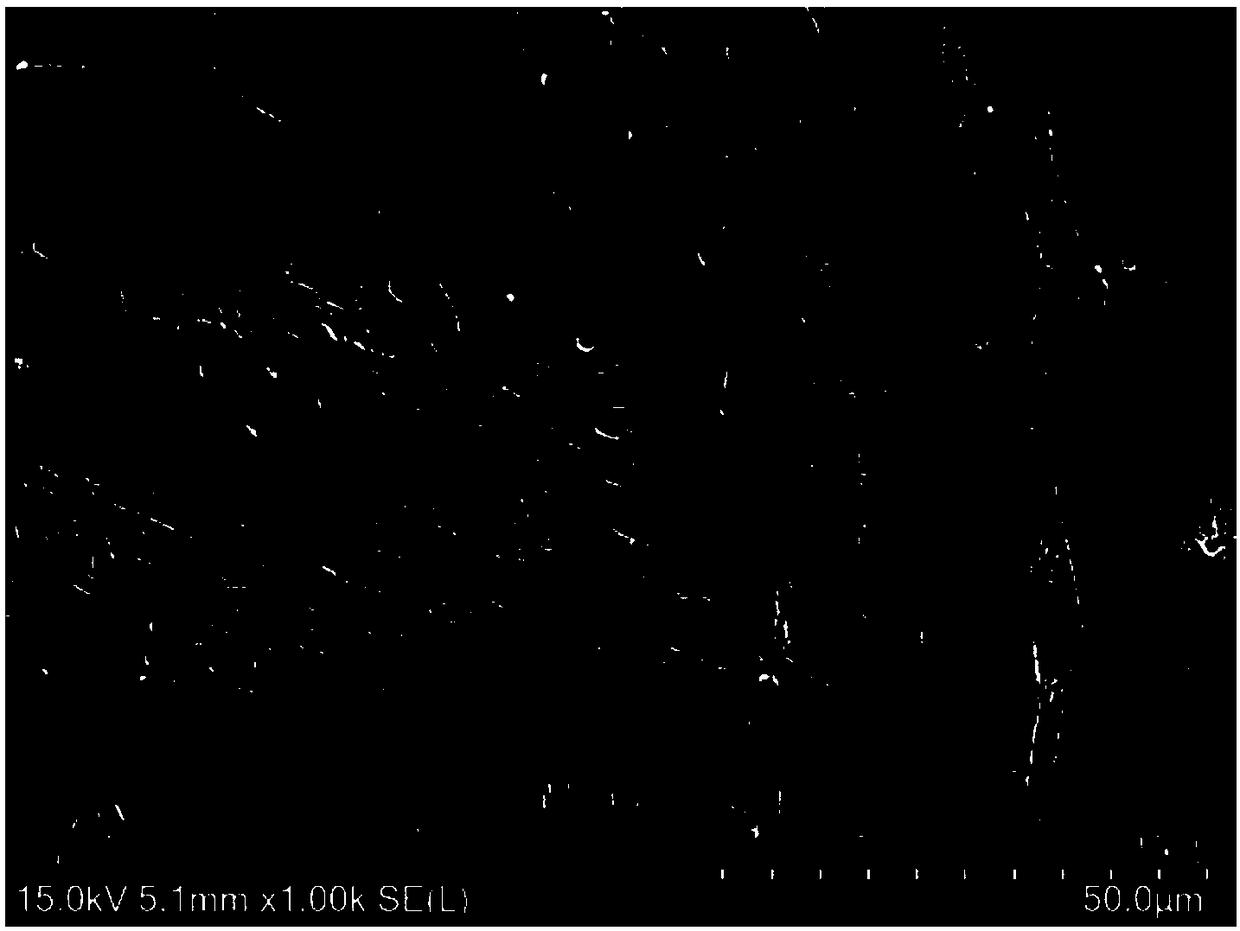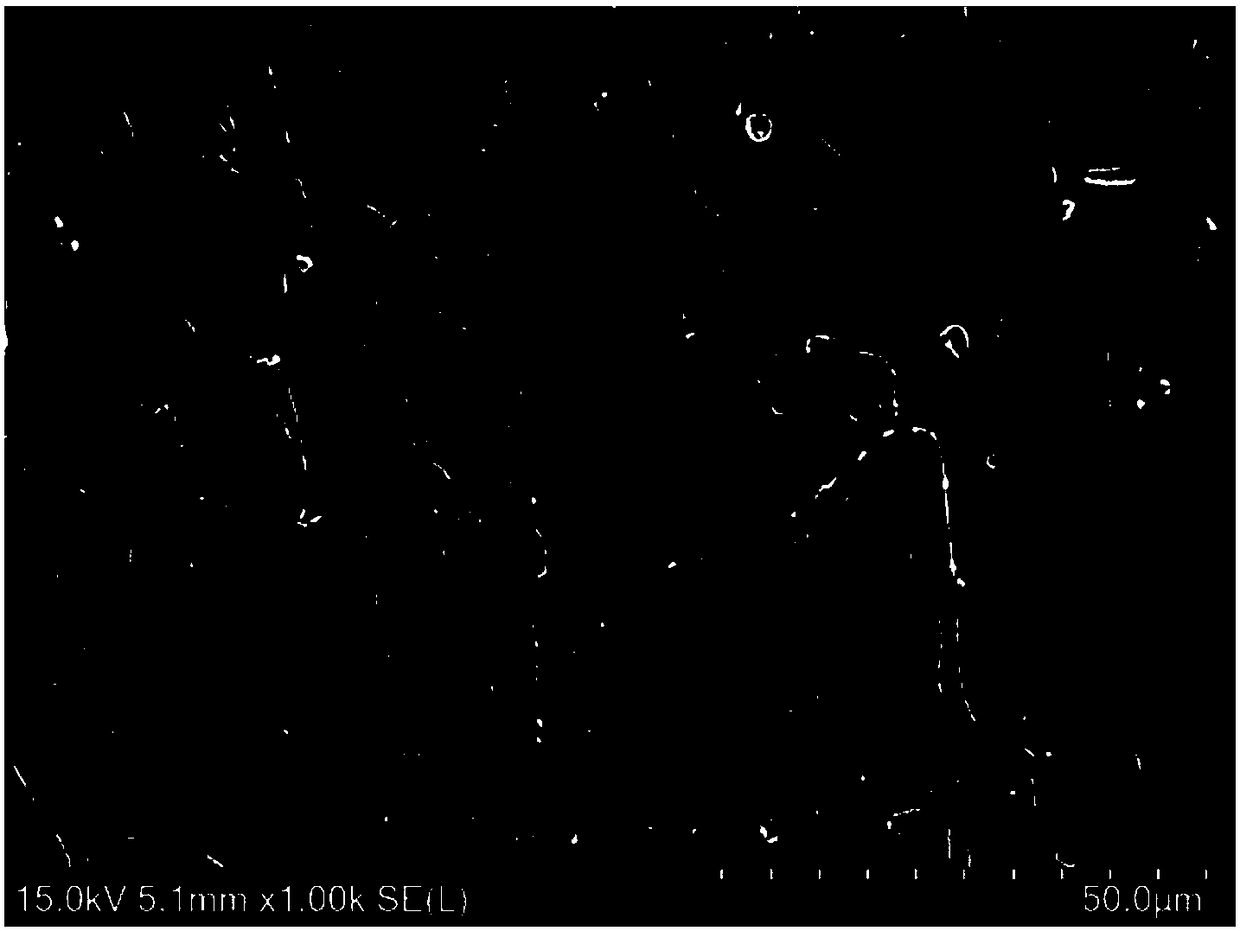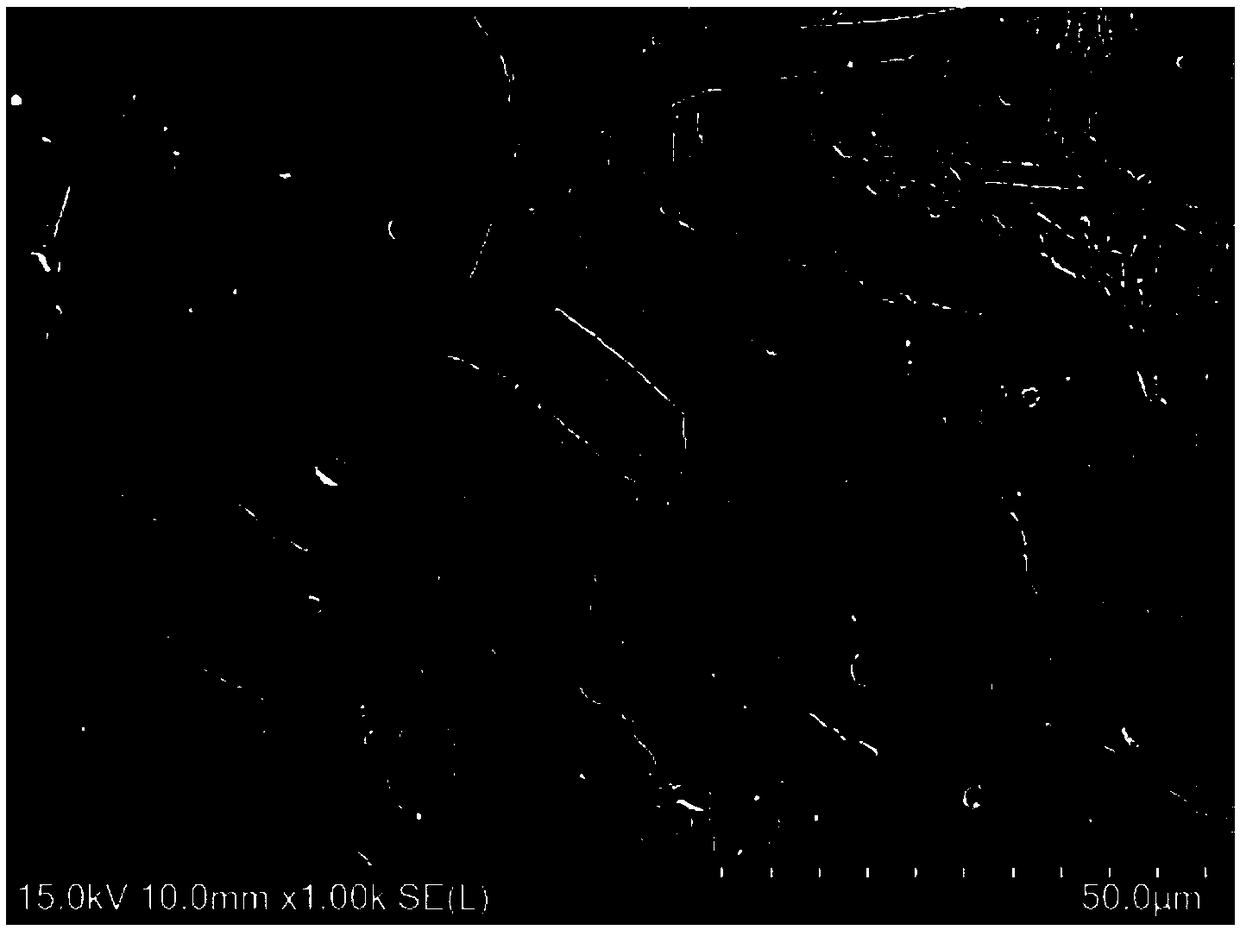Novel martensitic heat-resistant steel alloy powder and method for manufacturing laser additive with complex flow channel structure by using same
A technology of alloy powder and laser additive material, which is applied in the field of alloy powder, can solve problems such as inability to meet high temperature service requirements, poor casting structure performance, and high production difficulty, achieve excellent forming process performance, and avoid oxide slag inclusions, grains, etc. fine uniform effect
- Summary
- Abstract
- Description
- Claims
- Application Information
AI Technical Summary
Problems solved by technology
Method used
Image
Examples
Embodiment 1
[0065] First, the ingredients are prepared according to the following proportions, including 0.07% carbon, 0.2% silicon, 0.5% manganese, 8.0% chromium, 1.5% tungsten, 0.4% molybdenum, 0.15% vanadium, 0.15% tantalum, 0.1% lanthanum and 0.2% cerium, the balance is iron.
[0066] Put the prepared metal manganese, metal chromium, metal tungsten, metal molybdenum, metal vanadium and metal iron into the intermediate frequency induction furnace, and heat it to melt, carbon block, raw material silicon, metal tantalum, metal lanthanum and metal cerium as supplementary materials Add, the temperature in the intermediate frequency induction furnace is controlled at 1520 ℃ when adding supplementary material. The configured carbon block, raw silicon and metal tantalum are sequentially added to the molten alloy solution. Deoxidation treatment is carried out by adding metal lanthanum and metal cerium, and the time of deoxidation treatment is 1 min. After the ingredients are adjusted to pass...
Embodiment 2
[0071] According to the method described in Example 1, parts with complex flow path structures are prepared. The difference from Example 1 is that the ingredients in this example are formulated according to the following target components, including 0.11% carbon, 0.4% silicon, 0.5% manganese, 9.1% chromium, 1.5% tungsten, 0.5% molybdenum, 0.2% vanadium, 0.15% tantalum, 0.1% lanthanum and 0.1% cerium, the balance being iron. During the preparation process of the new martensitic heat-resistant steel alloy powder, the temperature in the intermediate frequency induction furnace was controlled at 1500°C when the feeding material was added, the furnace temperature was 1450°C, the atomization pressure was 6MPa, and the drying temperature of the far-infrared dryer was 230°C. Then, the powder with a particle size ranging from 100 mesh to 350 mesh is screened out by a powder sieving machine as the finished powder. The above-mentioned finished powder is made into parts with complex flow...
Embodiment 3
[0074] According to the method described in Example 1, parts with complex flow path structures are prepared. The difference from Example 1 is that the ingredients in this example are formulated according to the following target components, including 0.15% carbon, 0.4% silicon, 0.5% manganese, 11.5% chromium, 1.5% tungsten, 0.6% molybdenum, 0.2% vanadium, 0.15% tantalum, 0.05% lanthanum and 0.05% cerium, the balance being iron. During the preparation process of the new martensitic heat-resistant steel alloy powder, the temperature in the intermediate frequency induction furnace was controlled at 1550°C when the feeding material was added, the furnace temperature was 1500°C, the atomization pressure was 8MPa, and the drying temperature of the far-infrared dryer was 235°C. Then, the powder with a particle size ranging from 100 mesh to 350 mesh is screened out by a powder sieving machine as the finished powder. The above finished powder is made into parts with complex channel str...
PUM
| Property | Measurement | Unit |
|---|---|---|
| particle size | aaaaa | aaaaa |
Abstract
Description
Claims
Application Information
 Login to View More
Login to View More - R&D
- Intellectual Property
- Life Sciences
- Materials
- Tech Scout
- Unparalleled Data Quality
- Higher Quality Content
- 60% Fewer Hallucinations
Browse by: Latest US Patents, China's latest patents, Technical Efficacy Thesaurus, Application Domain, Technology Topic, Popular Technical Reports.
© 2025 PatSnap. All rights reserved.Legal|Privacy policy|Modern Slavery Act Transparency Statement|Sitemap|About US| Contact US: help@patsnap.com



